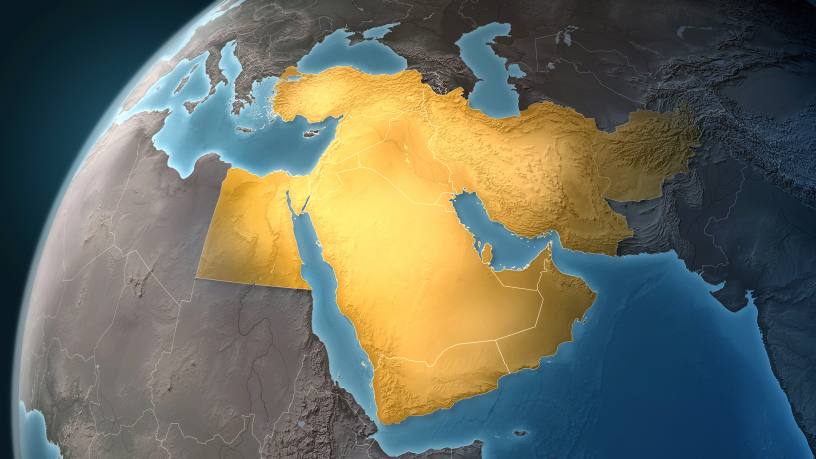A recent report focusing on the digital banking landscape in the Middle East has found that opportunities for fintechs and new banks centre on the unbanked, while incumbent banks are catering for wealthier citizens.
The research, ‘Digital Banking in the Middle East’, was carried out by global banking, payments and commerce company BPC, in conjunction with the Fintech Consultancy Group (Fincog), and focuses on the six nations of the Gulf Cooperation Council (GCC) while considering adjacent regions from western Asia to north Africa.
It identifies many financial services opportunities in the region, which in some parts are inhabited by a wide diversification of nationalities, 60%–80% of whom are foreigners.
A key banking trend in the region is of consolidation in GCC banks to increase capital investment, says Hany Al Deeb, BPC managing director for GCC and Iraq. He explains that in terms of the fertile ground for digital banking, growth in this part of the world had been based on the internet and on wealthier citizens in the region.
However, in line with the region’s traditionally strong banking market, the report shows there is a relatively small unbanked population across the GCC countries. Twelve per cent of the adult population in the UAE are unbanked, 28% in Saudi Arabia and 34% in Qatar. The region average of 77% banked adults compares starkly with other global regions.
A digital gap in the market
The demand for innovative fintech solutions and digital banking propositions across the Middle East and north Africa is primarily driven by low financial inclusion rates across the region, which has pushed unbanked and underserved consumers to look for alternatives to traditional banks, which are failing to meet their needs.
Jeroen de Bel, founder of Fincog, says: “There is an underlying growth potential for digital banking players as consumers grow increasingly familiar with compelling digital-only offers for financial products and services. We hope our findings will benefit those interested in the manyopportunities being presented in this part of the world.”
underserved segments have ignited this need for digital bank growth
“The extension of the internet across local residents is around 90% to 95%,” he continues. “Equally important today is that traditional banks are focused on the middle class and above.” This presents a significant opportunity for digital banks to tap in and serve the unbanked segments, he argues.
“These underserved segments basically have ignited this need for digital bank growth,” agrees Mr Al Deeb, who explains that there is demand for workers to be able to send money back home.
Regulation underpins regional goals
BPC commissioned UK research company Fincog to find out what it takes to build a digital bank in the Middle East region, and research the nature of the landscape. “Each landscape between different regions has different requirements, different competitiveness and different needs. What works in Europe doesn't necessarily work in the Middle East,” says Mr Al Deeb.
The report’s insights cover Middle Eastern demographics, its economy and consumer behaviour, as well as the region’s banking footprint and where it is headed.
One of the report’s key findings is that government priorities to foster future growth involve digital transformation and sector diversification, including financial services and technology. Saudi and other governments of the GCC are playing a significant role by introducing regulations that support their goals of reducing the burden of cash circulation and creating a cashless society, says Mr Al Deeb.
“A number of regulations have been announced in [the] UAE and Saudi Arabia where some 300 fintechs have been licensed and a further 300 are awaiting their licence,” he explains. These regulations have created a supportive background for fintechs with local labs and sandboxes, he adds. “This gives them a safe environment in which to start developing and creating innovative software that can support the lifestyle needs of consumers who are currently driven in the Middle East by the Y generation.
“A big chunk of this generation in the Middle East [...] are very much tech savvy. Compared to all other different demographics around the world, the Y generation is a very [large] segment of society, which contributes to the need [to promote] digital banks within this part of the world right now.”
New banks focus on financial inclusion
Incumbent banks in the Middle East tend to serve the wealthy part of society, explains Mr Al Deeb. “They tend to go for wealthier clients because these are the most profitable [customer segment].” However, he adds, the tapping of a previously neglected market segment – the unbanked – is being driven by new banks.
He cites the example of a bank in Pakistan that primarily serves blue-collar labourers, and has empowered them through the use of digital banking technology. “The challenge with blue-collar workers is that they cannot bank with the incumbent banks, because there's a sizeable minimum balance that they have to maintain.”
But this bank requires no minimum balance, the required documentation is kept to a minimum and it provides a service that meets the lifestyles of this middle-class segment and below. “The unbanked segments – the labourers, the workers – they are more focused [on] savings and saving schemes,” adds Mr Al Deeb.
While incumbents have been slowly advancing their propositions, fintechs are still better placed to address the outstanding needs and problems that confront unbanked and underserved individuals as well as smaller-sized businesses, according to the report. Fintech can leverage automated and AI-based processes to deliver services that more closely or more efficiently fit customers’ needs, it says.
The key advantage is that the technology powering these innovative fintech propositions generates significant operational cost reductions and allows a wider audience, untapped by incumbents, to be reached through social media and other online access points.
“By leveraging the extensive internet penetration which characterises the region, fintechs can easily offer their services through digital channels rather than setting up an expensive physical presence,” says Mr Al Deeb.
Unique factors in the region
The challenges faced in other regions such as Asia and Europe, regarding the acquisition of talent, are not as great in the Middle East, says Mr Al Deeb, owing to the growth of newly licensed fintech firms.
Flexibility when it comes to working from home following lockdown and the introduction of cloud computing is a further benefit to the region, according to the report. “Staff nowadays do not need to be physically present to do the job,” says Mr Al Deeb. In turn, there is less need for staff from regions further afield such as India to migrate to work in the GCC region, increasing the scope for selective recruitment, he says.
However, he stresses that it is still necessary for fintech and financial services organisations to have a physical office. “In Saudi [Arabia] and [the] UAE, you cannot handle a local mega project unless you have a physical premises in the country,” he says.
In terms of expertise, cyber security is among the areas with the most sought-after jobs. “There are high demands on the security area,” with coding and software engineers being among the most important roles, explains Mr Al Deeb.
To be able to compete in a traditionally strong banking market such as the Middle East and to acquire sufficient market share, new entrants are urged to differentiate themselves and focus on the needs of a particular demographic segment of the population, the report finds.
The two most desirable attributes in the Middle East fintech sector are, first, having experience of three to five years plus and, second, being creative, says Mr Al Deeb.
“Creativity is very important,” he stresses. “In order for any technology company to strive, they need to differentiate themselves.”
Another unique aspect of the region is its high demand for Islamic finance. The estimated Islamic fintech market size for the Organisation of Islamic Cooperation is expected to rise from $49bn to $128bn by 2025. Meanwhile, Saudi Arabia’s fintech market, currently worth approximately $17.8bn, is expected to reach $47.5bn in the next four years.
The report concludes that the Middle East’s younger population is driving a transition from internet banking to mobile. The sector is poised to continue growing at a continually accelerating pace, representing a huge opportunity for both flexible and forward-looking fintech players.












